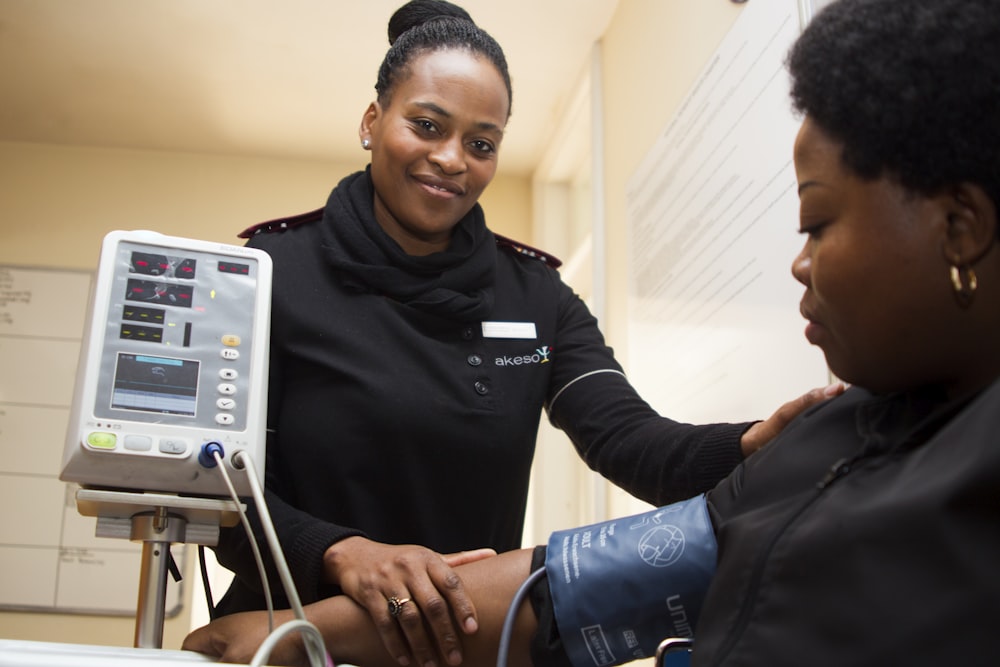When it comes to obstructive sleep apnea, there can be consequences far more serious than simply feeling exhausted when you wake up in the morning. One of the most well-documented side effects of sleep apnea is hypertension, or high blood pressure.
When sleep apnea is a contributing factor, high blood pressure can actually develop into what is known as “resistant hypertension,” where blood pressure becomes difficult to manage with standard medication and treatment.
Because of this, it is essential to understand the relationship between these conditions and to take action to address them.
So, How Are Sleep Apnea and Hypertension Related?

If you suffer from both sleep apnea and hypertension, you’re hardly alone. In fact, research has determined that 50 percent of individuals with sleep apnea also experience hypertension. It’s also worth noting that poor sleep in and of itself is considered a risk factor for hypertension, with sleep interruptions and getting fewer than 5 hours of sleep per night being noted issues.
The reason why individuals with obstructive sleep apnea are at a higher risk for hypertension is because of the interruptions to sleep that occur throughout the night. During normal sleep patterns, blood pressure gradually falls during sleep. Each time someone wakes up because of a sleep apnea episode, this process is disrupted.
Blood pressure increases when air pressure becomes blocked during a sleep apnea incident as blood oxygen levels also drop, while the levels of carbon dioxide in the blood increase. The body automatically increases blood pressure in response to the lack of oxygen. Blood pressure typically decreases after normal breathing resumes. But for someone with severe sleep apnea, their blood pressure may remain elevated all night due to frequent sleep interruptions.
Obstructive sleep apnea can also cause oxidative stress, whole-body inflammation, and metabolic disruptions, which are also known to contribute to hypertension. Perhaps even more problematic, the frequent disruptions to sleep can reduce the effectiveness of normal hypertension treatments — meaning that even if you are taking medications as recommended, they may not be able to effectively control your blood pressure.
Addressing Sleep Apnea and Hypertension

For individuals with obstructive sleep apnea, a CPAP machine is generally considered to be the best method for improving sleep quality and preventing breathing interruptions. CPAP machines provide a steady flow of pressurized air at a prescribed level determined by a sleep specialist. With uninterrupted sleep, you won’t experience nighttime blood pressure spikes, and studies confirm that using a CPAP device can help individuals with sleep apnea better control — and even lower — their blood pressure.
To obtain a CPAP machine, you will need to consult with a sleep specialist, who will have you undergo a sleep study, either at home or in a special facility. During the sleep study, they can monitor your nighttime breathing to determine whether you have sleep apnea, and how severe it is. The severity of your sleep apnea and other sleep habits will be used to determine which pressure setting and type of mask will be best for you.
Of course, while a CPAP machine can control sleep apnea, it isn’t a cure-all for hypertension itself. Most individuals must make a variety of lifestyle changes to get their blood pressure back to a healthy level — and many of these changes can also improve sleep quality.
Perhaps the most obvious thing you can do to address hypertension is to eat a healthy diet and exercise regularly. Being overweight or obese significantly increases your risk of developing both obstructive sleep apnea and hypertension. A balanced diet that is rich in fruits, vegetables, and whole grains can go a long way in improving heart health. If it has been some time since you exercised regularly, you should consult your physician before starting. They can help you develop a plan to ease into an exercise routine so that you can achieve your fitness or weight loss goals without risking injury.
If you smoke, make it a top priority to quit. High blood pressure and heart disease are just some of the major negative side effects of long-term smoking. Smoking also causes upper airway inflammation and irritation, which can make you more likely to experience severe obstructive sleep apnea. Quitting smoking won’t just reduce your risk for severe hypertension or sleep apnea — it also reduces your risk for other harmful consequences of smoking, such as lung cancer.
Finally, using a CPAP machine can ensure that medications like ACE inhibitors and beta-blockers are able to work effectively to control your blood pressure. Ask your doctor if changes to these prescriptions need to be made as a result of undergoing CPAP therapy.
Improve Your Sleep Quality, Improve Your Heart Health
Untreated sleep apnea and resistant hypertension can ultimately put you at greater risk for severe medical issues like heart attack, stroke, and heart disease. Because of this, few things are more important than helping your blood pressure return to a healthy level. By controlling your sleep apnea with a CPAP machine and taking other steps to improve your blood pressure, you can enjoy a dramatically higher quality of life.
However, if you don’t have health insurance, purchasing a CPAP machine can sometimes be easier said than done. Fortunately, Help Medical Supplies makes it easy to get the medical equipment you need at a price you can afford. We offer a wide range of CPAP machines and accessories at discounted prices off of MSRP. Free shipping is available on orders of $99 and up, and you can also qualify for interest-free financing on orders of $500 and more. The right equipment at the right price will help your sleep quality and your heart.

